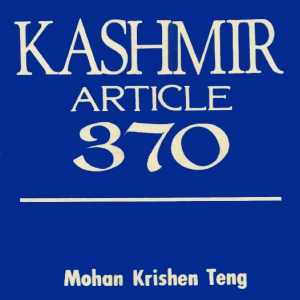Kashmir History
The Muslim and Hindu peoples of Kashmir have lived in relative harmony and friendliness since the 13th century when Islam first became the majority religion in Kashmir. The Sufi-Islamic way of life that ordinary Muslims followed in Kashmir complemented the rishi tradition of Kashmiri Pandits (Hindus), leading to a syncretic culture where Hindus and Muslims revered the same local saints and prayed at the same shrines.
Periodically however, there have been rulers and leaders who have had a narrow view of Islam, and have subjected Hindu minorities to great cruelties and discrimination. The current armed secessionist movement in Kashmir mostly derives its inspiration from these people.
narrow view of Islam, and have subjected Hindu minorities to great cruelties and discrimination. The current armed secessionist movement in Kashmir mostly derives its inspiration from these people.
A canard is now being spread past few years by the secessionist-terrorists and their sympathizers that in 1990 Kashmiri Pandits left Kashmir willingly, having been "tricked" by then Jammu and Kashmir Governor Jagmohan. Nothing could be farther from the truth. The fact is that Kashmiri Pandits were driven from their homeland after a campaign of intimidation and harassment was launched against them by the military-wing of the secessionists. Kashmiri Pandits were forced from their hearths and homes at the point of gun. The objective of this ethnic cleansing was to create a minority free Kashmir valley where the goal of Islamization could be easily forced on the ordinary people. The books and articles below will provide you with an in-depth understanding of the genesis of the current political situation in Jammu and Kashmir.
The Kashmir Story
The book attempts to project facts and facts alone and also underline the grievances of the Kashmiri people.
Paradise Lost: Seven Exoduses of Kashmiri Pandits
So much has been sung of the marvellous and magnificent beauty of the physiography of Kashmir
Understanding the Kashmir Turmoil
Kashmir, the most picturesque area in this part of the world, known for its beauty, gardens and gentle people has been reduced to a region of ghosts because of the devious means adopted by Pakistan to incite the people by giving them arms and instigating them into terrorism.
With love from Pakistan....
There are credible reports of official Pakistan support for militants fighting in Kashmir. -- U.S. State Department report Patterns of Global Terrorism 1995.
Baharistan-i-Shahi (A Chronicle of Mediaeval Kashmir)
Baharistan-i-Shahi, a Persian Manuscript history of Kashmir by anonymous author and brought down to A.D. 1614, has served as an important reference work for historians from the 17th century to the present day.
Afghanistan Factor
Afghanistan is located at the crossroads of Central, South and West Asia, sharing its borders with the Central Asian States of Tajikistan
Kashmir Article 370
The present study is aimed to trace the process of federalization in India and the inclusion of special provisions for the Jammu and Kashmir State embodied in Article 370 of the Constitution of India.
White Paper on Kashmir
The present crisis in the Jammu and Kashmir State is a continuation of the Muslim struggle in India for an independent Muslim homeland, which culminated in the separation of the Muslim majority provinces of Sindh,
The Poplar and the Chinar: Kashmir in a Historical Outline
The paper presents the recent militancy in Kashmir in a historical context. The policies of the Government of India that have contributed to the alienation of the different religious communities of the State are analyzed.
Kashmir: The Storm Center of the World
The story of Kashmir is a long story of betrayal by our own leaders. All endeavors by our honest, hardworking patriotic men were nullified by treachery.
- 1
- 2













